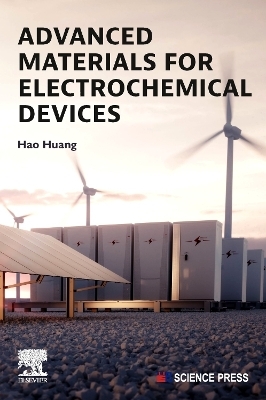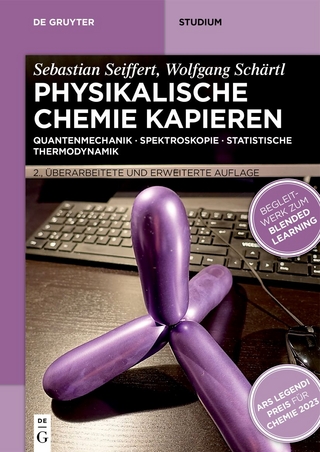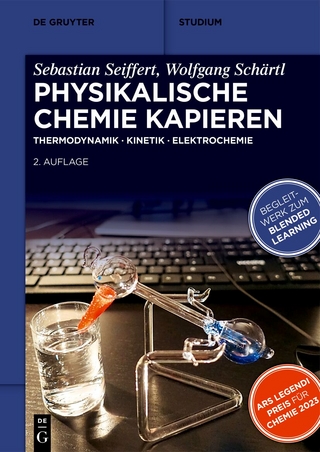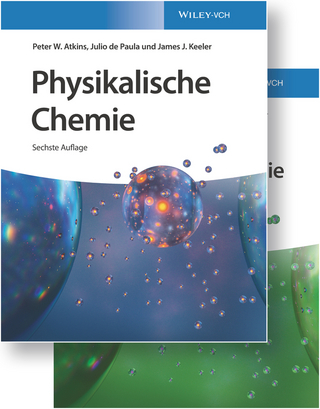
Advanced Materials for Electrochemical Devices
Elsevier - Health Sciences Division (Verlag)
978-0-443-13488-3 (ISBN)
This book is divided into four parts to comprehensively and systematically describe the related contents of energy storage materials: Preparation and Electrochemical Fundamentals of Energy Storage Materials (Part I), Electrode Materials of Electrochemical Devices (Part II), Electrolyte and Separator Materials of Electrochemical Devices (Part III), Performance Prediction and Application Technology of Electrochemical Devices (Part IV).
Hao Huang, PhD, Professor, School of Materials Science and Engineering, Dalian University of Technology; Director, Key Laboratory of Energy Materials and Devices, Liaoning Province; Director, Experimental Center of Materials Science and Engineering, Dalian University of Technology. Doctorate in 2001-2005 from Changwon National University, Korea; In 2003, he worked as a member of the Korea Institute of Materials Science (KIMS) and the United States Massachusetts Institute of Technology (MIT) Composite Cooperation Research Group. He joined the Dalian University of Technology in 2005 and taught the doctoral course 'Energy Materials and Devices' for many years. In 2018, He established the Key Laboratory of Energy Materials & Devices (Liaoning Province). Professor Hao Huang has been committed to the research on the basic science and application technology of energy storage nanomaterials, which has brought breakthroughs to the bottleneck problems in the field of new energy materials, mainly including: (1) Macro fabrication and fine micro-structure control of nanoparticles. He designed the mass production equipment of nanoparticles by arc discharge method. The macro fabrication of multi-type nanoparticles is realized. He clarified the growth mechanism of nanoparticles in the plasmatic environment, and established the structure-activity relationship between the structural characteristics and electrochemical performance. (2) high-density and long-term energy storage of the nanoparticles. The core-shell nanostructure was designed to prevent the pulverization failure caused by volume expansion of the electrode nanomaterials during cyclic energy storage. (3) Correlation between the defect/surface structure of nanoparticles and the electrochemical reactions. The first-principles calculation and experiments are effectively combined to investigate the correlation between the defect/surface structure characteristics of nanoparticles and electrochemical reactions, providing an accurate scientific basis and effective data for the design and screening of new electrode materials. The author published 3 books including “Key Materials for High-Performance Battery (Science Press, China), and reported 108 academic papers in academic journals. The research results have been highly affirmed and recognized by experts in this field and research institutions. Over the past decade, more than 100 Ph.D and MA. students have been graduated from his lab and obtained important positions in the industries of advanced energy materials.
Part I Preparation and Electrochemical Fundamentals of Energy Storage Materials 1. Development History and Research Status of Energy Storage materials 2. Preparation Technology of Nano Energy Materials 3. Electrochemical Fundamentals of Energy Storage Materials
Part II Electrode Materials of Electrochemical Devices 4. Electrode Materials of Ion Batteries 5. Electrode Materials of Air Batteries 6. Electrode Materials of Supercapacitors 7. Electrode Materials of Fuel Cell 8. Electrode Materials of Solid-State Batteries
Part III Electrolyte and Separator Materials of Electrochemical Devices 9. Electrolytes of Electrochemical Devices 10. Separator Materials of Electrochemical Devices
Part IV Performance Prediction and Application Technology of Electrochemical Devices 11. Performance Prediction and Evaluation of Electrode Materials 12. Application Technology of Electrochemical Devices
| Erscheinungsdatum | 23.09.2023 |
|---|---|
| Verlagsort | Philadelphia |
| Sprache | englisch |
| Maße | 152 x 229 mm |
| Gewicht | 1160 g |
| Themenwelt | Naturwissenschaften ► Chemie ► Physikalische Chemie |
| ISBN-10 | 0-443-13488-X / 044313488X |
| ISBN-13 | 978-0-443-13488-3 / 9780443134883 |
| Zustand | Neuware |
| Informationen gemäß Produktsicherheitsverordnung (GPSR) | |
| Haben Sie eine Frage zum Produkt? |
aus dem Bereich


